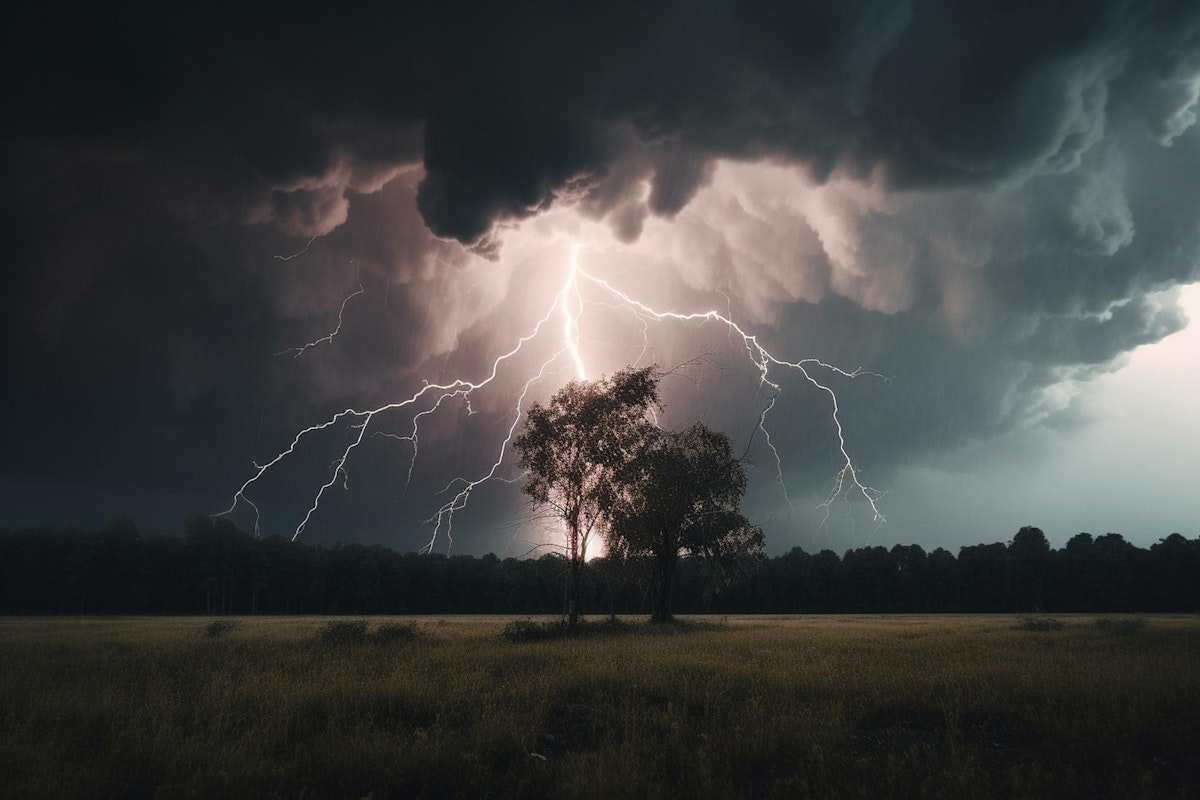Thunderstorm: One is afraid of it, and the other immediately sees photo opportunities. Photographing thunderstorms is a challenge, but with the right preparations and techniques, you can do it too! At the end we also explain how you can photograph thunderstorms with your smartphone.
It might also be interesting: In this way, you can photograph sunsets with your smartphone. 18 helpful tips
be ready
Thunderstorm photography begins with good preparation. Check sources like your favorite weather app or Buienradar to see if a storm is coming. There is also often a thunderstorm warning across the news.
If a thunderstorm is really approaching, you can use the radar to find out where the thunderstorm is. There are also some natural signs by which you can read about an approaching storm:
-
Cloud Watch: Cumulus clouds are often a sign of approaching thunderstorms. These are large, towering clouds that often have an anvil shape at the top. They can look menacing and are often a sign of heavy rain, lightning, and possibly thunderstorms on the way.
-
Watch for changes in wind and temperature: A sudden change in wind direction or speed can be a sign that the weather is about to change. A sudden drop in temperature can also be a sign of an approaching thunderstorm.
-
Watch your air pressure: A sudden drop in air pressure can be a sign that bad weather is on the way. You can measure air pressure with a barometer if you have one, but many weather apps and websites also provide air pressure information.
safety
One of the most important things when launching a thunderstorm: watch your safety! So find a safe place to shoot, such as inside a building, under an overpass, or in a car. Avoid open fields and don’t stand under a tree. You can also protect the camera from rain with (universal) quality. rain cover.
Set up the camera correctly
The secret to a great lightning photo is a slow shutter speed. The faster the shutter speed, the more light will enter the camera. For example, opening the shutter for sixty seconds will capture all lightning flashes that occur during that time frame. So you have more chance of the flash in your photo if you set a slower shutter speed. You can set a slow shutter speed by putting the camera in manual mode (M mode). Sometimes you need to select bulb mode, which slows down the shutter speed as long as you hold down the shutter button.
Make sure the camera is turned on Tripod Since a slow shutter speed also brings a lot of motion blur if the camera is not perfectly still. It’s also helpful to use a remote control so you don’t have to touch the camera to press the shutter button.
Want to know more about how to prevent blurry photos? is reading: Blurry photos? 5 common mistakes and solutions
When photographing a thunderstorm, set the aperture (F number) to a higher value (such as F 8) to prevent the photo from being overexposed due to too much light entering the camera (due to a slow shutter speed). In addition, you can use a lower ISO value (say ISO 100) to reduce noise and to be able to set shutter speeds for longer periods of time without overexposure.
Use a wide angle lens
It’s always a mystery where exactly lightning strikes. To increase your chances it is helpful to have one Wide angle lens So that you can work with a small focal length (preferably less than 20mm). This allows you to capture a wide perspective knowing for sure that the flash is resting on your image.
Regarding composition: Also try to include something in the foreground, so that you’re not just shooting a flash but actually creating an interesting image. For example, an amazing bridge, church tower or office complex.
Is the camera on a tripod and is it set up correctly? Then it’s often a matter of taking a lot of pictures, being lucky and being patient.
Gadget: Use the Lightning Trigger
The lightning trigger reacts to rapid changes in light and is therefore ideal for photographing lightning. With each flash of lightning, the camera instantly takes a picture. This trigger is especially useful if you want to shoot during the day, because now you can’t leave the shutter speed open for as long as you can with night photos. This actuator often has many sensors, so it can also respond to sound.
Powered by
Photographing thunderstorms during the day
Is there going to be a thunderstorm during the day and you want to record it? Then it pays to have one gray filter (Also called an ND filter). It’s hard to set slow shutter speeds during the day, because there’s a lot of natural light. This gray filter acts as a kind of sunglasses for the lens: everything gets darker, so you can set the shutter speed longer.
Photographing thunderstorms with your smartphone
Photographing thunderstorms with a smartphone can be challenging, but it is definitely possible. Most modern smartphones have advanced camera settings that you can adjust. You may have to download a separate app for this that offers more setup options than the standard camera app.
Look for settings like shutter speed, ISO, and white balance. Just like when shooting with an SLR or mirrorless camera, you can choose a slower shutter speed to capture lightning. You will also need a tripod to avoid camera shake. There are very cheap ones Tripods around your smartphone to be installed.

“Thinker. Coffeeaholic. Award-winning gamer. Web trailblazer. Pop culture scholar. Beer guru. Food specialist.”







More Stories
The Bloober team is working on a mystery game in collaboration with Take-Two Interactive
boulder sky 1484 | 1 – 8 May 2024
These NASA shuttles, rockets and rovers are made of Lego bricks